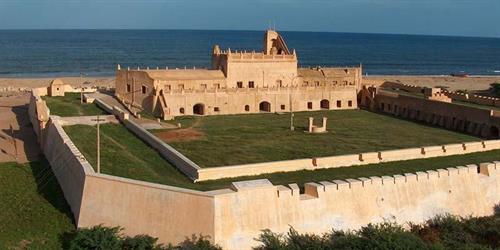
PUMPA - SMART LEARNING
எங்கள் ஆசிரியர்களுடன் 1-ஆன்-1 ஆலோசனை நேரத்தைப் பெறுங்கள். டாப்பர் ஆவதற்கு நாங்கள் பயிற்சி அளிப்போம்
Book Free DemoBritish
The Queen of England, Elizabeth, permitted the governor and company of Merchants of London to trade with the East Indies (present Indonesia).
- 1608: Captain Hawkins visited Jahangir's court to get a favour in doing business. Though he got permission to construct a Surat settlement, it was cancelled by the sultan due to the Portuguese's mounting pressure.
- 1611: British set up their first manufacturing plant at Masulipatnam (in present Andhra Pradesh). It was an important seaport of the erstwhile kingdom of Golconda.
- 1612: Captain Thomas defeated the Portuguese in a naval battle near Surat.
- 1613: Jahangir permitted the British East India Company to construct a manufacturing plant at Surat. It was the headquarters for them in Western India.
- 1614: Captain Nicholas Downton won a decisive battle against the Portuguese. After this, the reputation of the British was increased at the Mughal Court.
- 1615: Sir Thomas Roe was sent to Agra by “King James I” to sign a commercial deal with Jahangir. It took three years for him to strike the deal; until then, he stayed at Agra. Before his return to England, the British constructed their trading centres at Surat, Agra, Ahmedabad and Broach.
- 1639: With a lease deed, Francis Day acquired Madras from the chief of Chandragiri, "Chennappa Nayaka". They built their first fort called St. George Fort. It later became the headquarters for the whole of the eastern belt.
- 1662: The island of Bombay was gifted to King Charles II of England on his marriage with Princess Catherine of Portuguese.
- 1668: The island of Bombay was rented out to the East India Company for 10 Pounds /Annum by King Charles II.
- 1690: Job Charnock constructed a manufacturing plant at Sutanuti.
- 1696: The manufacturing plant was fortified.
- 1698: The British acquired landholding and collecting taxes for the villages Sutanuti, Kalikata and Govindpur (present-day Kolkata).
- 1700: The fortified manufacturing plant at Sutanuti was named as “Fort William”.
The shift in their business interest to political power became evident after the Battle of Plassey, 1757 and the Battle of Buxar, 1764.
Until 1858 India was under the rule of the East India Company; after that, India came under the British Crown rule.
Danish
Christian IV, the king of Denmark, established a Danish East India Company on March 17, 1616.
They constructed their Settlements in\ 1620 at Tranqueber, Tamilnadu, and in 1676 at Serampore, Bengal (Danish headquarters in India). Due to their territorial expansion failure, they disposed of all their Indian assets to the British in 1845.

Tranquebar Danish Fort
Reference:
https://memorableindia.com/blog/places/tranquebar-the-little-danish-town/